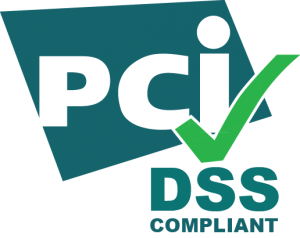Security of Digital payments is essential and it can be achieved by using PCI-DSS certification. Security in online transactions is very critical for digital security.

Overview of Security of Digital Payments
After discussing the basis of payment gateway and understanding the settlement mechanism, let us dive deep into Security and threats in digital payments. Cashless payments have made our lives easier but as we know there are no free lunches. Online Transactions involve cards, not present transactions. Hence, opportunities for fraudulent misuse of payment networks and data theft grow right alongside. Moreover, people are not well aware enough regarding the use of cashless payments, wallets, and other modes falling into the trap of data breaches and hackers imposing risks. Other than this, storage of card details, passwords by the merchant, chargebacks, lack of technical integration interfaces leading to delayed processing of payments, system design, implementation, legal, and risk are other challenges faced in online payments. Data thieves have a huge amount of knowledge on how new technologies work, so they are always looking for the vulnerable points of payment processing. Therefore, it is very important to make people well aware of the optimal use of digital/ online payments services and choose the right payment service that is PCI-DSS compliant to mitigate and overcome such challenges. Let us first understand what PCI-DSS means.
Role of PCI-DSS security in digital payments
Payment Card Industry Data Security Standards (PCI DSS) tell merchants how sensitive data used in payments should be secured. It requires data encryption to provide payments without using real card data that’s visible while processing. Doing business should be based on trust and PCI compliance helps improve security. You need to do everything to decrease the risk of payment and data fraud that could damage a brand’s reputation. You can visit . However, the Security of Digital Payments is very much crucial especially when so much fraud on different levels.
Level of PCI-DSS compliance
Let us review the levels of PCI DSS compliance:
A level 4 merchant is a business processing less than 20 thousand Visa e-commerce transactions a year, or any merchant processing less than a million Visa transactions a year, regardless of card entry mode.
A level 3 merchant is a business processing between 20 thousand and one million Visa e-commerce transactions a year.
A level 2 merchant is a business processing between 1 and 6 million Visa e-commerce transactions a year.
A level 1 merchant is a business processing more than 6 million Visa e-commerce transactions a year, or a business considered a level 1 merchant by Visa association itself (based on cardholder data security and risk-related considerations).
Merchants would process credit card transactions and store payment card data in order to be able to issue a refund (return money) on the card if the cardholder returns merchandise. Sometimes, certain processors will require full credit card information to settle transactions at the end of the day.
The complexity of PCI compliance certification and PCI audit for a given business is determined according to the level this business belongs to. The most common payment card data storage solution for repeat purchases and recurring billing is tokenization. Instead of getting and storing the credit card number, businesses, wishing to have support for repeat purchases and recurring billing, are getting a token from a PCI-compliant tokenization provider. Thus, they can store a token instead of the card number, and reuse it in subsequent transactions\purchases, while reducing their PCI scope.
Role of SSL in digital security
All transactions should be secured with SSL protocol. you can visit 4 phases of SSL protocol. Using SSL helps to encrypt the information so that the card details and all other sensitive data is protected. It, of course, improves payment security but also makes customers more willing to buy. 3D secure is an additional security layer that helps with fraud prevention in debit and credit card transactions. In short, when an online shopper wants to buy something, he/she creates a secure password for the credit card he/she uses to pay. At that time, every transaction will be confirmed with the password in order to add extra protection.
In short, whenever you choose a payment gateway, make sure that it is PCI level complaint, use HTTPS, 3D secure, and fraud management tools are properly used.
Nice..